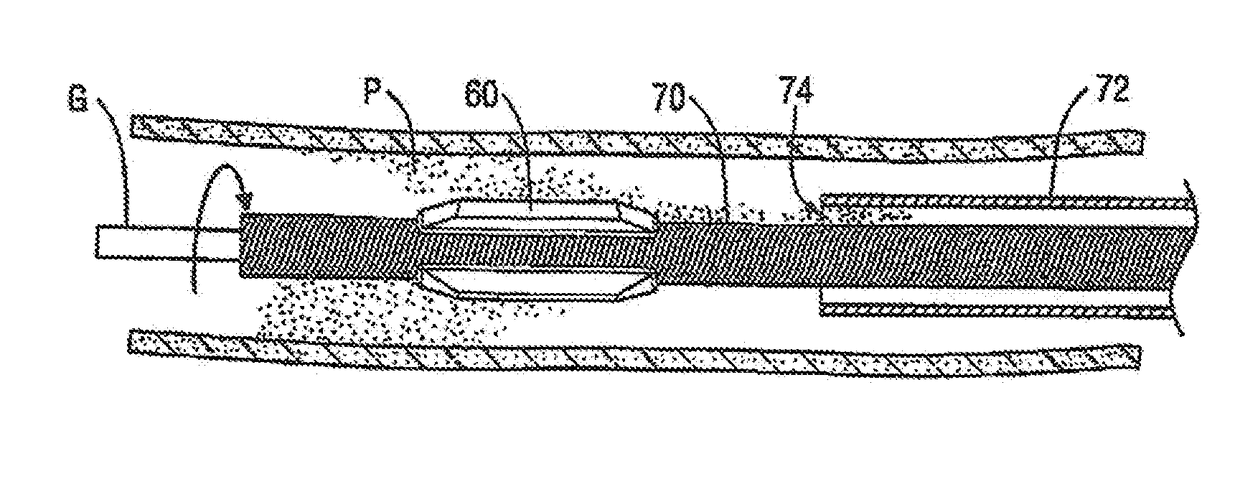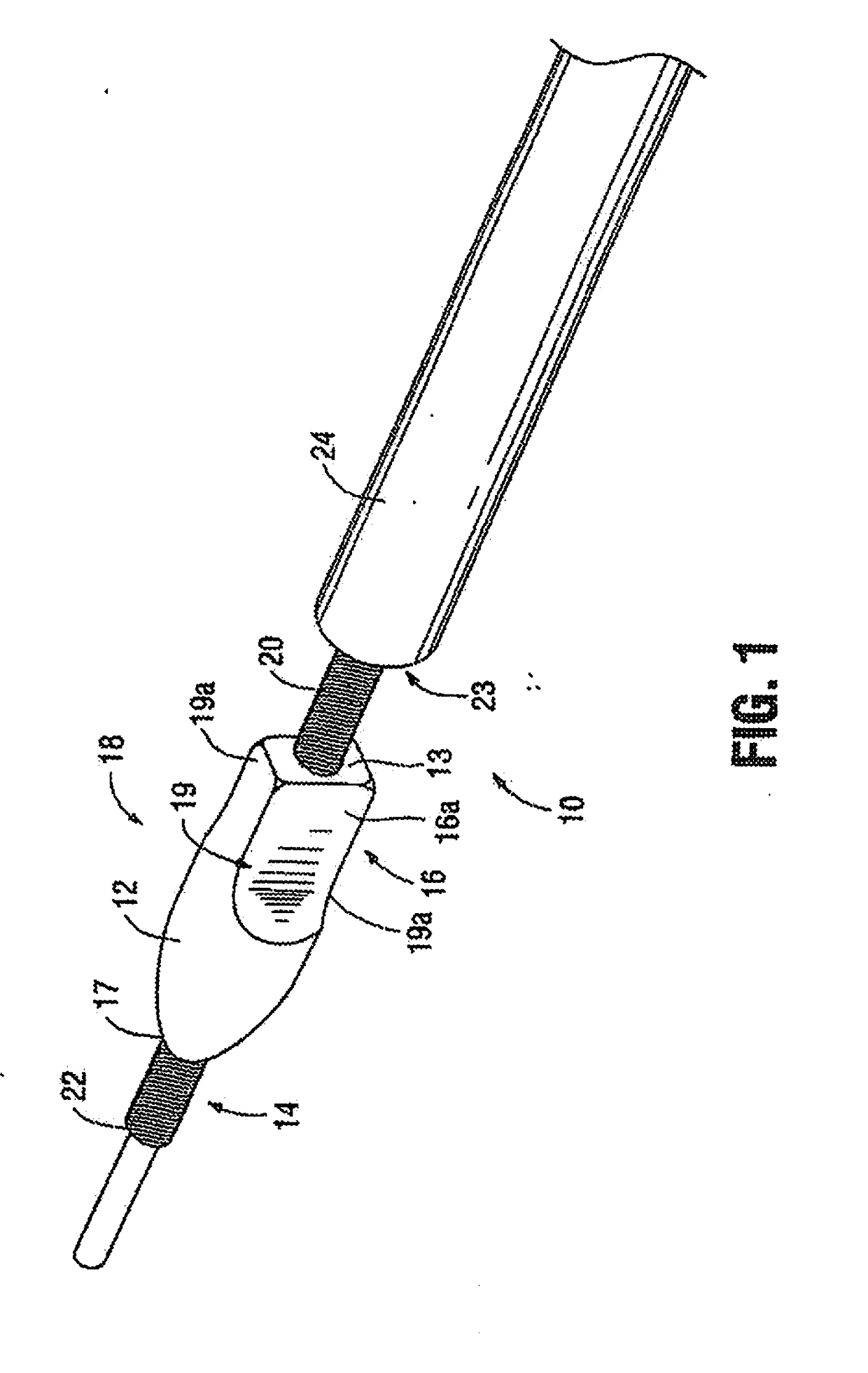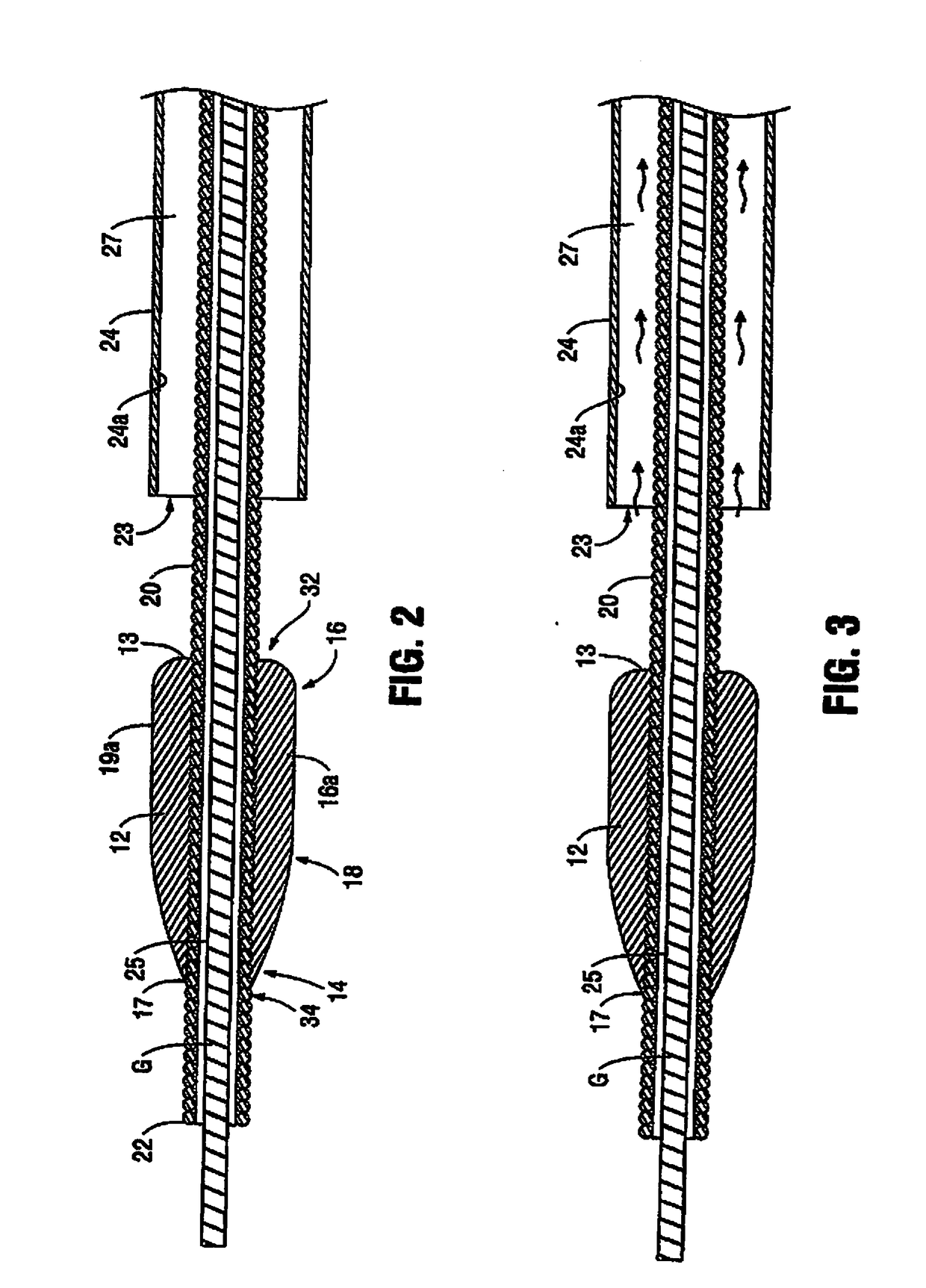Atherectomy device
a technology of atherectomy and a limb is applied in the field of minimally invasive devices, which can solve the problems of requiring the limb amputation of the patient, stroke, and even death, and achieve the effects of reducing the risk of strok
- Summary
- Abstract
- Description
- Claims
- Application Information
AI Technical Summary
Benefits of technology
Problems solved by technology
Method used
Image
Examples
Embodiment Construction
[0107]The present invention is directed to an atherectomy device designed for high speed rotation to remove plaque or other deposits on the inside wall of the vessel to widen the blood passageway therethrough. To achieve such rotation, the atherectomy tip is positioned at a distal portion of a flexible rotatable shaft that can be gas or electrically powered. The shaft rotates at high speed, typically between 100,000 and 200,000 rpm, causing the cutting or ablation surface of the tip to remove the plaque and deposits to which it comes into contact. The atherectomy device of the present invention has application in a variety of vessels such as the coronary arteries, peripheral vessels such as the tibial artery, femoral, and popliteal, and saphenous vein bypass grafts.
[0108]In order for the atherectomy tip to reach the vessel stenosis (obstruction) it is supported on a flexible shaft and inserted along with the flexible shaft through an introducer sheath and over a guidewire. More spec...
PUM
 Login to View More
Login to View More Abstract
Description
Claims
Application Information
 Login to View More
Login to View More - R&D
- Intellectual Property
- Life Sciences
- Materials
- Tech Scout
- Unparalleled Data Quality
- Higher Quality Content
- 60% Fewer Hallucinations
Browse by: Latest US Patents, China's latest patents, Technical Efficacy Thesaurus, Application Domain, Technology Topic, Popular Technical Reports.
© 2025 PatSnap. All rights reserved.Legal|Privacy policy|Modern Slavery Act Transparency Statement|Sitemap|About US| Contact US: help@patsnap.com



